Cuisine of Corsica
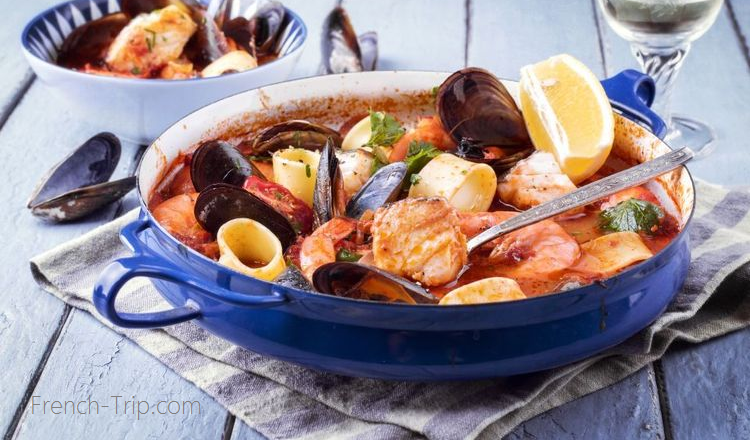
Corsican cuisine is a unique fusion of two of the world’s most celebrated culinary traditions: French and Italian.
On the Mediterranean’s fourth largest island, you’ll discover a gastronomy that reflects the influence of the sea and the regional characteristics of this coastal environment. Corsican cooking incorporates the Italian focus on quality ingredients and the French flair for blending flavors.
Yet, despite these familiar culinary elements, Corsica’s distinctive history and rugged landscape impart a unique character to its dishes. From the pork of wild boar and pigs feasting on chestnuts planted by past rulers, to the diverse range of wines produced by the island’s varied terroir, Corsican food offers a distinct taste of its origins.
Through hearty stews, rich game-filled ravioli, and aromatic biscuits, visitors to the island gain an intimate understanding of Corsica through its cuisine.
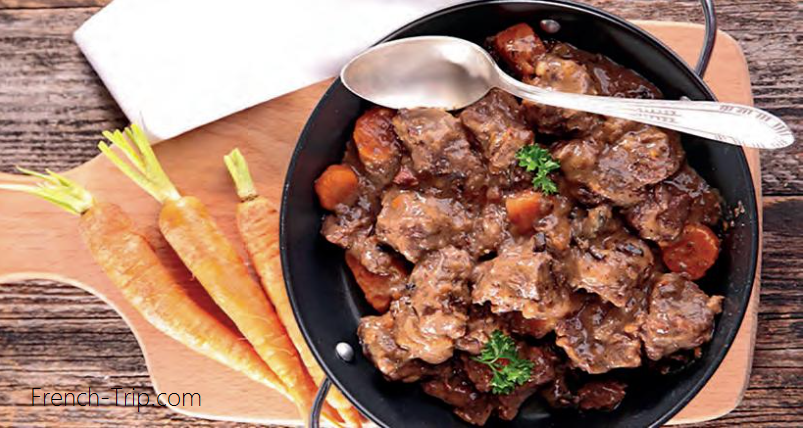
civet de sanglier
A Brief History of Corsican Gastronomy
Corsican cuisine has been deeply influenced by its geographical constraints and diverse cultural interactions. Shaped by the island’s rich history, its culinary traditions have evolved in tandem with local events and architectural changes.
Originally, Corsicans lived in the rugged mountainous regions before settling in the coastal areas once plagued by malaria. They were accustomed to a pastoral lifestyle, relying primarily on sheep for meat, milk, and hides. Beekeeping was also significant, providing the islanders with fragrant honey, while locally produced wines were exported to Rome.
Given the harsh high-altitude conditions, early Corsican culinary practices centered around hearty, earthy ingredients that could sustain the island’s communities.
During the Middle Ages, Corsica came under Tuscan and Genoese rule, which introduced strong Italian influences. A 1548 decree by a Genoese governor mandated that every landowner plant chestnut, olive, fig, and mulberry trees annually. These new ingredients soon became integral to the Corsican diet, transforming the local gastronomy. Chestnuts, in particular, replaced cereals and helped shield the islanders from famine.
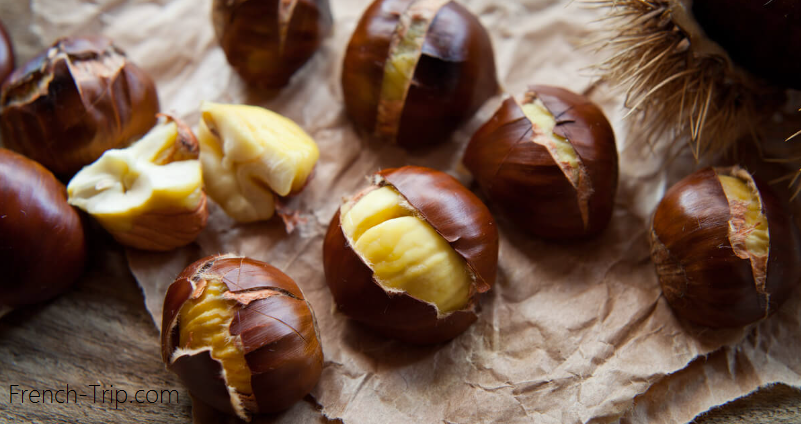
Chestnut forests proved resilient even against the French army’s attempts to eradicate them after Corsica’s annexation in 1768. These efforts failed, and chestnuts remained a cornerstone of Corsican cuisine.
Today, Corsica stands as a vibrant culinary destination, offering a diverse array of traditional dishes. The island’s rich gastronomic heritage, combined with a growing demand for high-quality, healthy produce, continues to enhance its unique culinary identity.
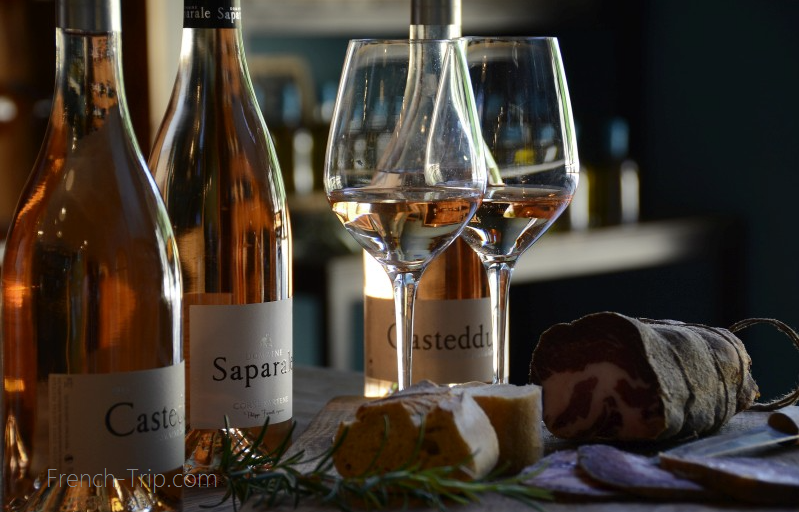
Main Products for Cuisine of Corsica
- Chestnuts: Corsica is known for its chestnuts, which are used in various dishes and as the basis for chestnut flour.
- Cheese: Corsica produces a variety of cheeses, including brocciu, a fresh cheese made from sheep or goat’s milk, and corsu vecchiu, a Corsican hard cheese.
- Seafood: Given its coastal location, seafood plays a significant role in Corsican cuisine, with fish and shellfish being commonly used.
- Wild Game: Wild boar, deer, and other game meats are featured in traditional Corsican dishes.
- Herbs: Corsican herbs like myrtle, thyme, and rosemary are used to flavor dishes and make herbal liqueurs.
- Honey: Corsican honey, produced from the island’s diverse flora, is used in sweets and desserts.
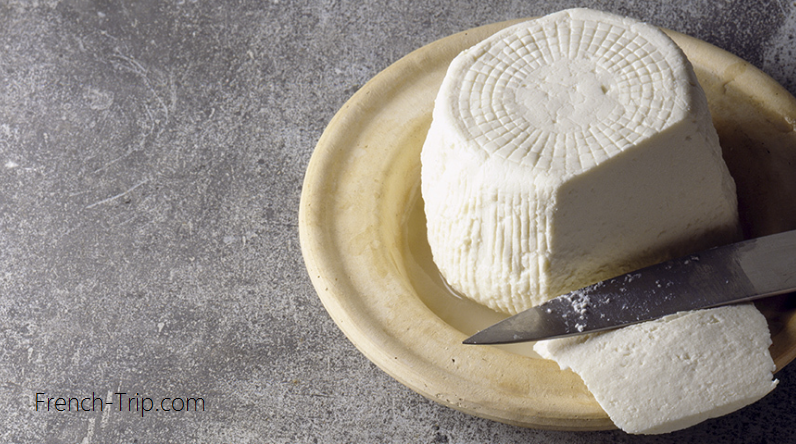
Cheese brocciu
Traditional Dishes of Corsica
- Civet de Sanglie: a wild boar stew with onions, carrots, garlic, chestnuts, fennel, brandy, and red wine. Often served with pasta or polenta. A hearty dish popular after hiking in the Corsican mountains.
- Brocciu-based dishes: brocciu is a soft cheese made from sheep or goat’s milk, similar to ricotta. Used in various dishes such as:
- Cannelloni au Brocciu: pasta stuffed with brocciu, Swiss chard, garlic, and mint
- Beignets au Brocciu: Corsican donuts filled with brocciu
- Fiadone: a cheesecake-like dessert made with brocciu, eggs, sugar, and lemon zest
- Soupe Corse: a traditional peasant soup from the Corsican mountains. Ingredients include chickpeas, dried beans, cabbage, onions, potatoes, and garlic. Sometimes includes ham or figatellu (Corsican sausage) for added flavor.
- Pulenta: a polenta-like dish made with chestnut flour. Often served with fresh brocciu, grilled figatellu, scrambled eggs, or honey.
- Veau aux Olives: veal stew with olives, a classic Corsican main course.
- Migliacci: savory wheat flour pancakes filled with fresh sheep or goat’s cheese. Popular in northern Corsica and often served as picnic food.
- Omelette à la Menthe: an omelet made with fresh brocciu and aromatic mint leaves. In spring, wild asparagus may replace mint.
- Aubergines à la Bonifacienne: stuffed eggplant dish, popular in the Bonifacio region.
- Aziminu: a fish soup that comes in two varieties:
- Azziminu di Capicorsu: made with sea fish
- Azziminu di Corte: made with river fish
- Stufatu: a traditional Corsican soup/porridge made with either wheat flour (stufatu di farin’di granu) or corn flour (stufatu di farin’di granonu)
More: Corsican traditional dishes
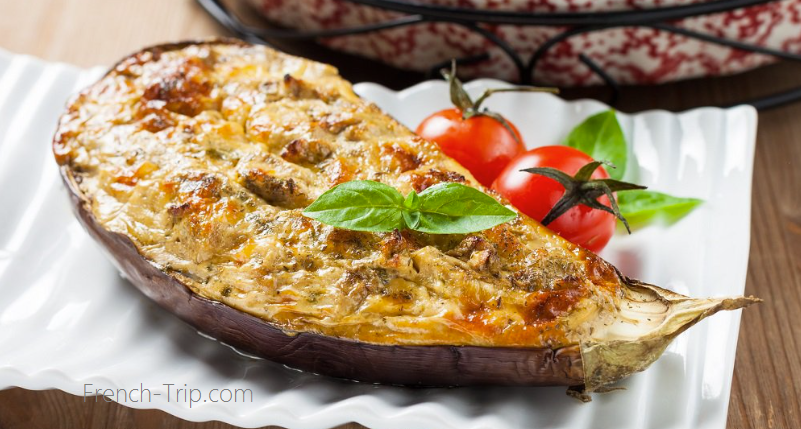
aubergines à la bonifacienne
Differences from Other French Cuisines
Corsican cuisine stands out from other French regional cuisines in several ways:
- Corsican Ingredients: The island’s unique ingredients, such as chestnuts, brocciu cheese, and myrtle, set Corsican cuisine apart.
- Italian Influence: Corsican cuisine has been influenced by Italian cooking due to its history and proximity to Italy, leading to the use of olive oil, herbs, and certain pasta dishes.
- Charcuterie: Corsican charcuterie, with its varieties of cured meats, is a distinctive feature of the cuisine.
- Wild Game: The presence of game meats like wild boar is a notable feature, reflecting Corsica’s rugged landscape.
- Seafood: The island’s access to fresh seafood adds a coastal element to Corsican cuisine.
- Chestnuts: The use of chestnuts in various forms, from flour to whole chestnuts, is a key aspect of Corsican cooking.
- Herbs and Aromatic Flavors: Corsican cuisine is known for its aromatic herbs and flavors, including myrtle and local herbs.
- Cheese Varieties: Unique Corsican cheeses like brocciu are widely used in regional dishes.
Corsican cuisine’s focus on locally sourced ingredients, game meats, cheeses, and aromatic herbs gives it a distinct identity within the broader landscape of French regional cuisines.
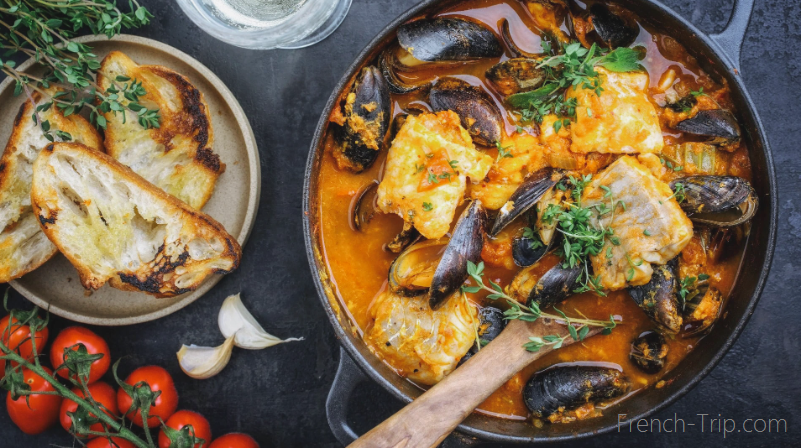
Aziminu fish soup
Related links:
- Corsican traditional dishes
- Corsican cheeses
- Cosrican charcuterie
- Corsican wines
- French cuisine
- French cheeses
Archives
Calendar
| M | T | W | T | F | S | S |
|---|---|---|---|---|---|---|
| 1 | 2 | 3 | 4 | 5 | 6 | 7 |
| 8 | 9 | 10 | 11 | 12 | 13 | 14 |
| 15 | 16 | 17 | 18 | 19 | 20 | 21 |
| 22 | 23 | 24 | 25 | 26 | 27 | 28 |
| 29 | 30 | 31 | ||||